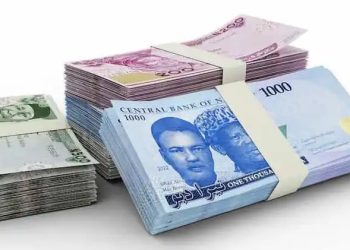The trade relationship between the two largest economies in the world has “significant imbalance” and the Biden administration is committed to leveling it, according to the U.S. trade representative.
Speaking on the weekend before a meeting of Asia-Pacific trade ministers, Trade Representative Katherine Tai said there are parts of the U.S.-China relationship “that are unhealthy and have over time been damaging in some very important ways to the U.S. economy.” She was speaking to reporters and responding to a question about whether the U.S. would continue with its trade deal signed with China in January 2020 and retain tariffs on Chinese goods.
“It’s a relationship in trade that has been marked by significant imbalance — that is in terms of performance, but also in terms of opportunity and openness of our markets to each other,” she said June 5, ahead of a virtual meeting of trade ministers from members of the Asia-Pacific Economic Cooperation forum. “The United States is committed to doing everything we can to bring balance back to the U.S.-China trade relationship.”
The comments come as the two nations seem to be increasing their economic discussions, with Chinese Vice Premier Liu He speaking to both Tai and Treasury Secretary Janet Yellen over the past two weeks. While China said that those talks showed the two sides have restarted normal communications, there’s been no public sign of any progress on the bilateral tariffs or of discussions over other economic flashpoints between the nations.
The talks between the two sides are “very encouraging,” Victor Gao, an academic and a former Chinese diplomat who was a translator for late leader Deng Xiaoping, said in an interview on Bloomberg TV Monday. “This bodes well for the future talks and negotiations between the two countries.”
The trade imbalance is something that needs to be dealt with, and the best way to do this is to boost bilateral trade, Gao said. Both countries should cut tariffs to zero, which “will be very good for American jobs and incentivizing every exporter in the United States to find a better market, a larger market in China.”
The U.S. administration is reviewing its stance toward China and hasn’t made any major changes to the policies it inherited from former President Donald Trump, and Tai has pledged to build on the January 2020 trade pact, saying on May 5 that she respects the continuity of U.S. policy.
However, there are increasing signs of the direction the new administration’s policy will take. The White House’s top official for Asia said last month that the U.S. is entering a period of intense competition with China, and the administration this week kept in place a Trump-era ban on investment in the U.S. by some Chinese companies.
Despite those diplomatic and political tensions, trade and investment flows between the two nations continue to strengthen. China’s exports to the U.S. are still growing, while China is stepping up its purchases of U.S. goods, even though that’s not enough to reach the levels promised in the trade deal.










